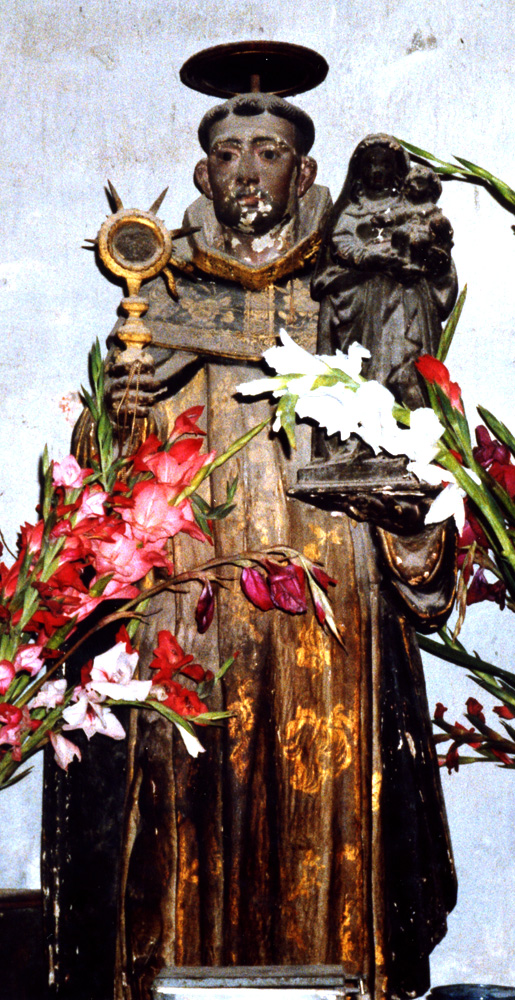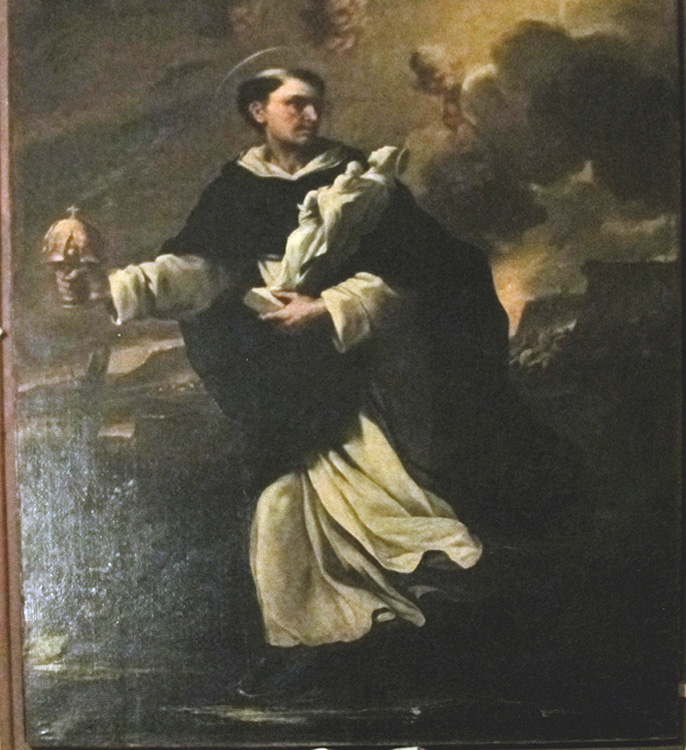Because a host is small and would not register very well visually, most images place it in a monstrance such as the one in the first picture at right. Sometimes instead of a monstrance the artist will picture a "ciborium," the covered, chalice-like container in which a priest stores the hosts that were not consumed during the Mass (example). In the legend there is no mention of a monstrance or ciborium.
Another legend has it that the Virgin Mary appeared to St. Hyacinth while he was praying and said, "Hyacinth, my son, rejoice, for your prayers have been accepted and granted in the sight of my son, the Savior of all mankind. Whatever you ask in my name, I will obtain of him" (ibid., 315, 340). This vision is also the subject of some images (example), and it is the basis for the numerous miracles that the saint was said to have effected through the mediation of the Virgin (example).
St. Hyacinth was among the founding members of the Dominican Order in 1217 or 1218. He and some others established the first Dominican priory in Poland shortly thereafter and embarked on a rather successful campaign of evangelization (Butler, III, 339). He is especially revered in Poland. Judging from the locale of his images that we have photographed or visited online, his cult seems to have been promoted also in Dominican parishes in Spain and its colonies.
Prepared in 2017 by Richard Stracke, Emeritus Professor of English, Augusta University

A Mexican santo of St. Hyacinth carrying the monstrance and statue (See the description page)

St. Hyacinth crossing the Dnieper (See the description page)
MORE IMAGES
- 1738: Painting by Giambattista Piazzetta of Hyacinth with Saints Louis Bertrand and Vincent Ferrer.
- Second half of the 18th century: In the margin of a Mexican nun's badge.
- Undated: St. Hyacinth crossing the Dnieper with a ciborium and the statue of the Virgin.
DATES
- Lived 1185-1257
- Feast day: August 17
NAMES
- In Spain and Latin America, San Jacinto
BIOGRAPHY
- Severinus Cracoviensis, De vita miraculis et actis canonizationis Sancti Hyacinthi confessoris (1544).
- Acta Sanctorum, August vol. 3, 309-379.
- Butler, III, 338-39.